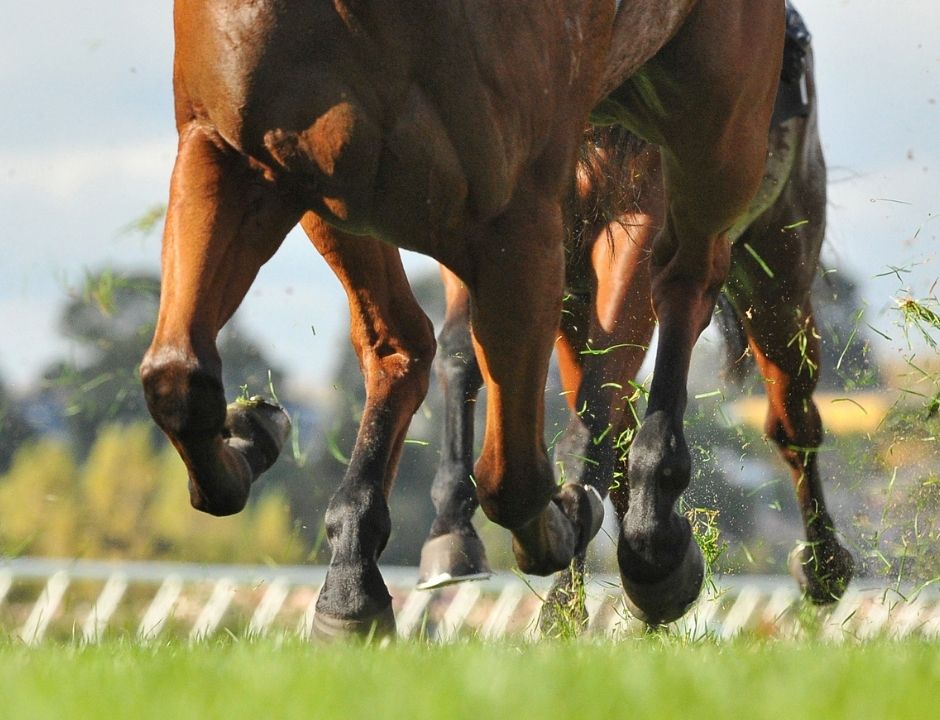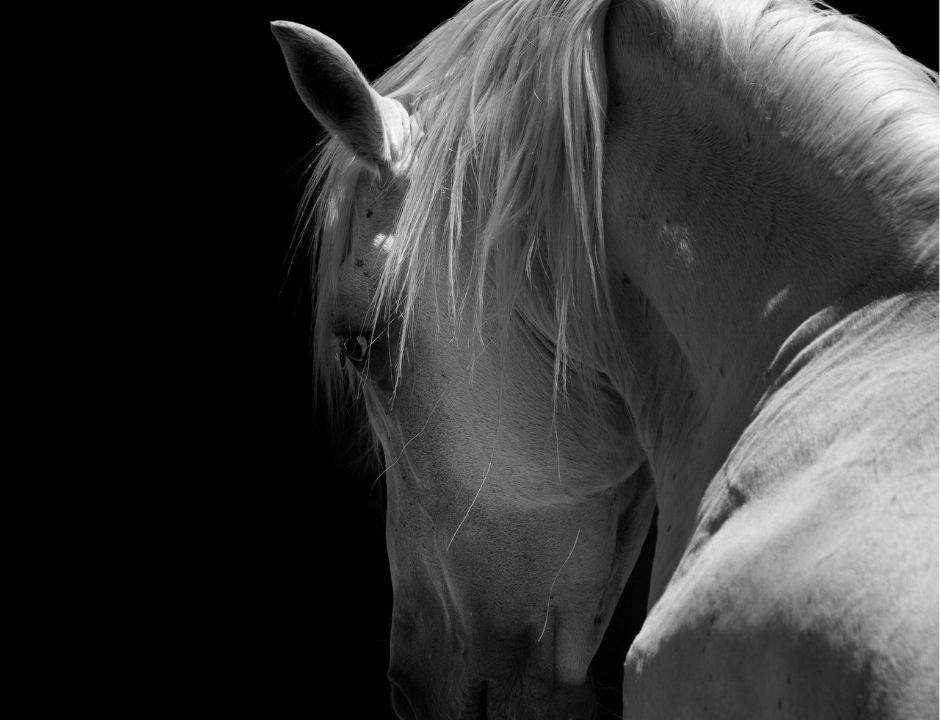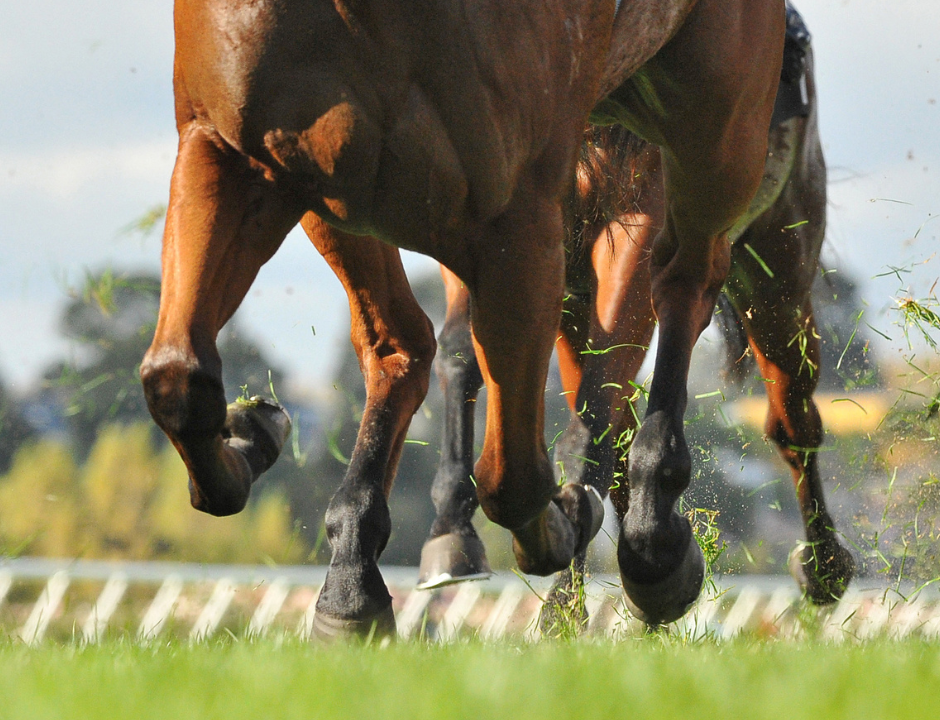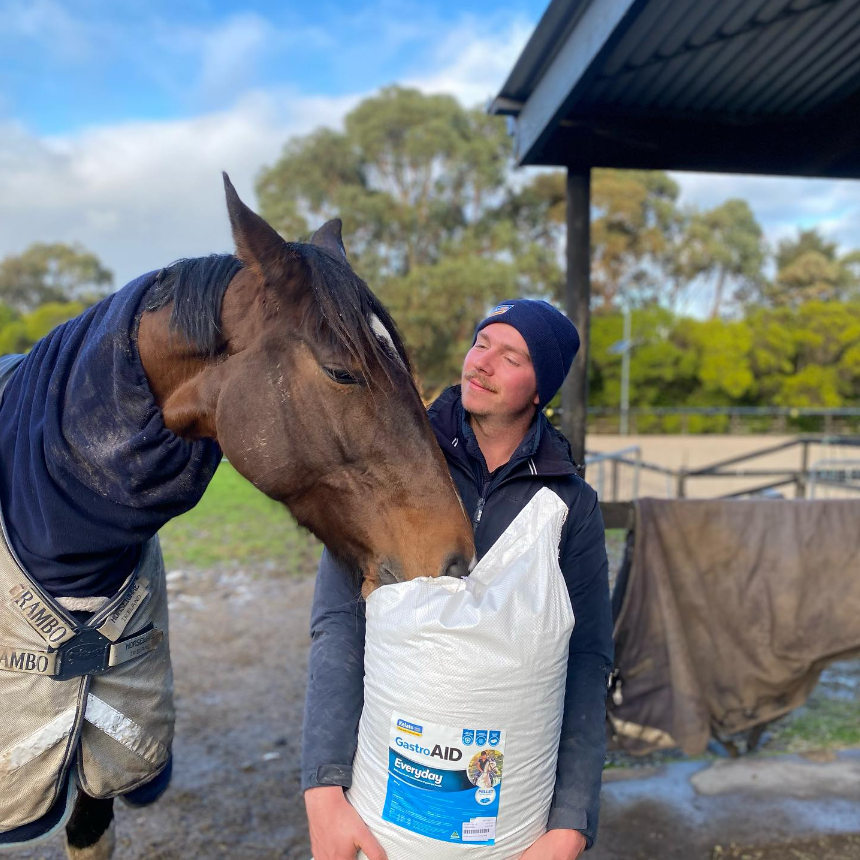The hindgut is a remarkable feature of the horse’s digestive tract. It’s not only important for fibre digestion, but also aids hydration and electrolyte balance, provides the horse with some vitamins and also contributes to immune function. The hindgut houses trillions of microbes that have a profound impact on the overall health and well-being of the horse. Disturbances of the gut microbiome can lead to a condition known as dysbiosis which can represent a serious health issue. So when feeding and managing our horses, we need to encourage a positive microbial balance and maintain optimal digestive health and function.
The hindgut
Horses are known as hindgut fermenters. They have a relatively simple stomach like humans do, but a large, developed hindgut that is capable of processing large quantities of plant fibre. The hindgut also houses trillions of microbes (bacteria, yeast protozoa, fungi) that produce enzymes to breakdown (ferment) fibre. The horse is completely reliant on these tiny little bugs to do the digestion work for them. Without these resident microbes, the horse wouldn’t be able to digest fibrous feeds such as pasture and hay that should make up the primary portion of their diet! Microbial fermentation of fibre provides a substantial proportion of the horse’s daily energy needs in the form of volatile fatty acids (VFAs). In fact, approximately 70% of the horse’s energy supply comes from VFAs.
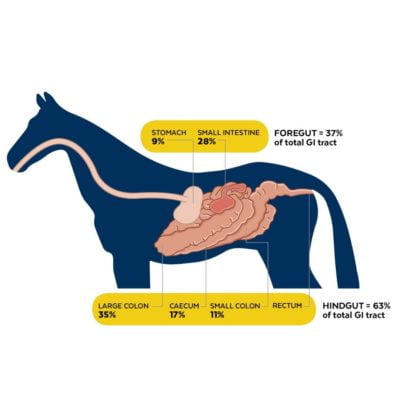
The gut microbiome
The gut microbiome is the combined genetic material of the microbes in the horse’s gut. We want a diverse and genetically rich population of microbes within the horse’s gastrointestinal tract (GIT). The act of domestication such as the feed we provide and management practices we impose on the horse change the microbial makeup of the GIT. Non-domesticated horses have a more diverse spectrum of microbiota compared to those of domesticated horses.
Our understanding of the complex interactions of microbial communities in the gastrointestinal tract is still an expanding research field in both human and veterinary medicine. However, there is emerging evidence that the gut microbiome is involved in more than just food digestion and the microbiota interact with the immune, neurological and endocrine (hormone) systems… Even the horse’s behaviour! So while it is still very early days, we KNOW we want to keep these microbes happy!
‘Good’ vs ‘bad’ microbes
In the horse’s hindgut, bacteria are divided into two categories. For simplicity, we refer to them as ‘good’ or ‘bad’ bacteria. Fibre fermenting bacteria are classified as ‘good’ bacteria. These bacteria breakdown the fibre provided in pasture, hay, chaff and high fibre feeds such as beet pulp and soy hulls.
As mentioned above, a by-product of microbial fermentation of fibre is the production of VFAs, which is a source of energy for the horse. Fibre fermentation is a slow process and ‘good’ bacteria only produce VFAs at the same rate as the horse can absorb them. So, acids never build up in the hindgut and the pH remains relatively neutral (close to pH of 7). On the other hand, bacteria that love to ferment starch and sugar are referred to as ‘bad’ bacteria. Starch and sugar are rapidly fermented into VFAs and lactic acid, which can accumulate in the hindgut and result in a condition known as “hindgut acidosis”.
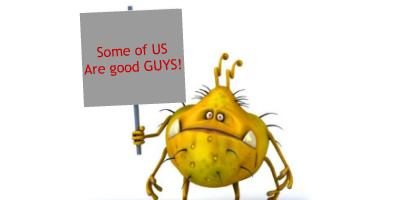
What is dysbiosis?
Now, all horse owner’s are aware of how notoriously sensitive their digestive system is. The microbes in the horse’s hindgut are in a very delicate balance and certain factors can cause changes in the microbiome composition. Serious disturbances of the hindgut microbial population can lead to a condition known as “dysbiosis”. Dysbiosis refers to an imbalance or maladaption of bacteria, which changes the normal health and function of the digestive tract, resulting in colic, colitis and other clinical situations.
Causes of dysbiosis include sudden changes in feed routine, diet type (low forage, excessive soluble carbohydrates), meal size, chronic administration of NSAIDS (e.g. bute), sand, parasites and antimicrobial therapy. The good news is, dysbiosis can be managed through dietary and management practices.
Optimise hindgut health through feeding and management….. Did someone say beer?
The hindgut is a fermentation vat and keeping it happy and healthy is all about stability. It’s like making beer, you need good quality ingredients and a nice stable environment to make good quality beer. We want to create ways to maintain stability in the hindgut and it comes down to appropriate feeding and management practices. And no, we don’t recommend feeding beer to your horse! We are of the view that beer is for adult humans to enjoy… Responsibly of course!
Maintaining a healthy hindgut – forage
Forage is the most important component of every horse’s diet and should be the first feed type we consider when developing a feed program for our horses. If you aren’t feeding enough fibre, the good fibre-fermenting bacteria in the hindgut won’t have enough food to maintain a healthy microbial population.
Many factors will influence the amount and type of forage you feed your horse, but a general rule of thumb is to provide a minimum of 1.5% of their body weight in forage per day. This works out to be 7.5kg per day for a 500kg horse.
It’s also important to provide constant access to forage to order to maintain optimal digestive health and function. Remember, horses are trickle feeders or ‘grazers’, which means they are adapted to spend the majority of their time eating. Since racehorses are typically stabled, the majority of their forage requirements will need to be met with adequate supplementary hay. Using a slow feeder such as a hay net will help to slow down consumption rate and provide the horse with something to pick at for a longer period.
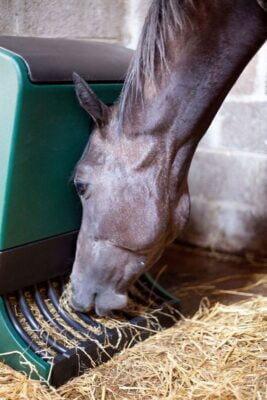
Maintaining a healthy hindgut – starch
First things first. Grains are NOT the devil! It’s how you feed them that’s important. Racehorses generally require high quantities of starch as a source of fast release energy during short periods of high intensity exercise. For the horse to obtain energy from the starch, it must be digested by the enzymes in the small intestine and then absorbed there. The problem is, the starch in grain is packaged and surrounded by many layers that make it difficult for the enzymes to access.
When we cook grains, we use processes such as extrusion, micronising and steam flaking to breakdown down the barriers around the starch granules. Cooking uses a combination of heat, moisture, pressure and some form of physical process like rolling or grinding to break up the grain structure.
Cracking or grinding grain leaves the majority of the layers around the starch granules intact, resulting in minor improvements in digestion. Soaking grains only makes them easier to chew. So, if you feed whole, soaked or cracked grains they will remain largely undigested as they pass through the small intestine and end up in the hindgut. The bacteria then rapidly ferment the starch, causing excessive production of acids, which accumulate and lower the pH (hindgut acidosis). The good fibre fermenting bacteria don’t tolerate acidic conditions very well and start to die off, whereas the ‘bad’ lactate producing bacteria continue to proliferate, creating an unbalanced microbial population in the hindgut (dysbiosis).
The key take home message is to NEVER feed uncooked grains to your horse. The one exception is oats, which are still quite digestible in their whole form. For racehorses requiring high energy diets, it can be of benefit to replace some of the starch in their ration with other energy sources such as fat (e.g. vegetable oil) or high energy fibrous feeds (e.g. beet pulp, soy hulls, lupins).
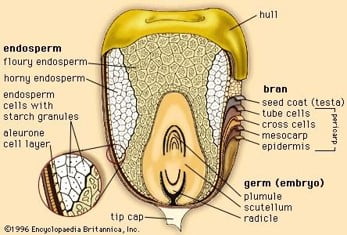
Maintaining a healthy hindgut – meal size
The rate of passage through the small intestine is quite fast. It speeds up if you feed your horse large meals, as the stomach loses its ability to slowly release food into the small intestine. When the rate of passage is too fast, nutrient absorption is reduced in the small intestine because it doesn’t have time to do what it needs to do.
Again, horses are trickle feeders and adapted to eat small amounts of feed. Whereas we tend to feed our horses like we feed ourselves – typically two large meals per day. Large meals will increase the rate of transit through the stomach and small intestine.
The starch content of feed dictates meal size, but a general rule of thumb is to feed no more than 2.5kg of hard feed per meal. This is why weighing your horse’s feed is so important, so you don’t underestimate how much you are feeding in one meal.
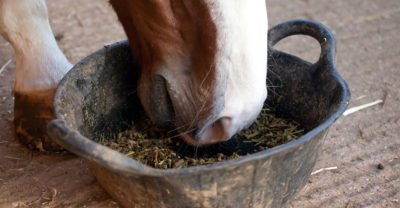
Maintaining a healthy hindgut – change feed gradually
It’s important to change a horse’s feed gradually over a period of 7 to 14 days. The hindgut microbes are in a very delicate balance and adapt to different feeds. This is an important consideration when changing BOTH forage and hard feed. For example, if you introduce your horse to a new paddock with fresh green pasture in Spring when they have been only fed dry hay in Winter, gradually increase their access to grazing over a few days. This is also an important consideration when changing hay types. For example, many horse owners report their horse doesn’t tolerate lucerne and develops diarrhoea. While some horses can have feed allergies, they typically develop diarrhoea because the lucerne is introduced too rapidly.
Maintaining a healthy hindgut – water
Water is the most essential nutrient in every horse’s diet. We often overlook water when discussing horse nutrition even though horses can’t go without water for as many days as they can without feed. Water is an essential component of the horse’s digestive process. If your horse doesn’t drink enough, the contents of their gut can become too high in dry matter and they will be at risk of developing impaction colic.
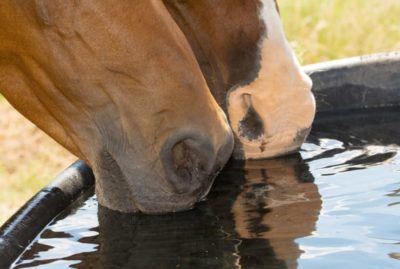
Obviously, water quality is important, as dirty or foul-tasting water is going to decrease intake. We also know some horses are fussy with different water sources and unfamiliar water can also discourage intake. So always make sure your horse has access to fresh, clean water. Adding salt to their feed will also help to maintain good hydration.
Maintaining a healthy hindgut – digestive health supplements
Kelato has two digestive health products in our range to support total digestive tract health – GastroAID Recovery and GastroAID Everyday. In particular, Kelato utilise specific strains of yeast species in the prebiotics and probiotics in our products to help promote a healthy gut, maintain a positive microbial balance and enhance feed conversion efficiency.
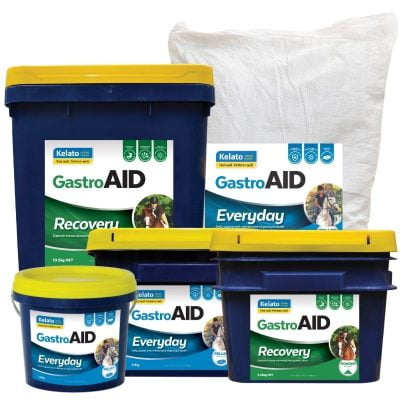
Why is yeast strain important?
Strain identification is critical for selecting the right yeast for the right purpose! Kelato utilise a targeted approach to gut health using specific strains of probiotics.
Popular supplements on the market tend to have a huge list of different probiotics in their products. While this may look good on paper, it doesn’t necessarily make the product more effective or beneficial for the horse. This what we call the “everything but the kitchen sink” approach. You get the horse to ingest a large number of non-specific microbe species in the hope that their hindgut is colonised with “good” bacteria to try and outcompete the “bad” bacteria. There are much better and more efficient ways to improve gut health.
Strain identification is critical to selecting the right probiotic for the right purpose. To gain a better understanding, let’s use horses as an example:
The horse is the species and the breed is the strain. For example, Clydesdales are big, powerful horses and therefore used for disciplines such as carriage driving. On the other hand, Thoroughbreds are athletic, lean and fast, which makes the breed ideal for racing.
As you can see, different horse breeds have different modes of action. In a similar way, different bacteria and yeast strains within a species have defined modes of action. Would you buy an unknown horse breed for an unknown purpose? Or would you swap a Thoroughbred for a Shetland if you want to win a gallop race? The answer is – probably not. When discussing pre- and probiotics, it’s important to have the same mentality and critical thinking.
Find out more about how GastroAID Recovery or GastroAID Everyday can benefit your horse. If you would like more information, please get in touch on 1800 KELATO or email technical@kelato.com.au.
